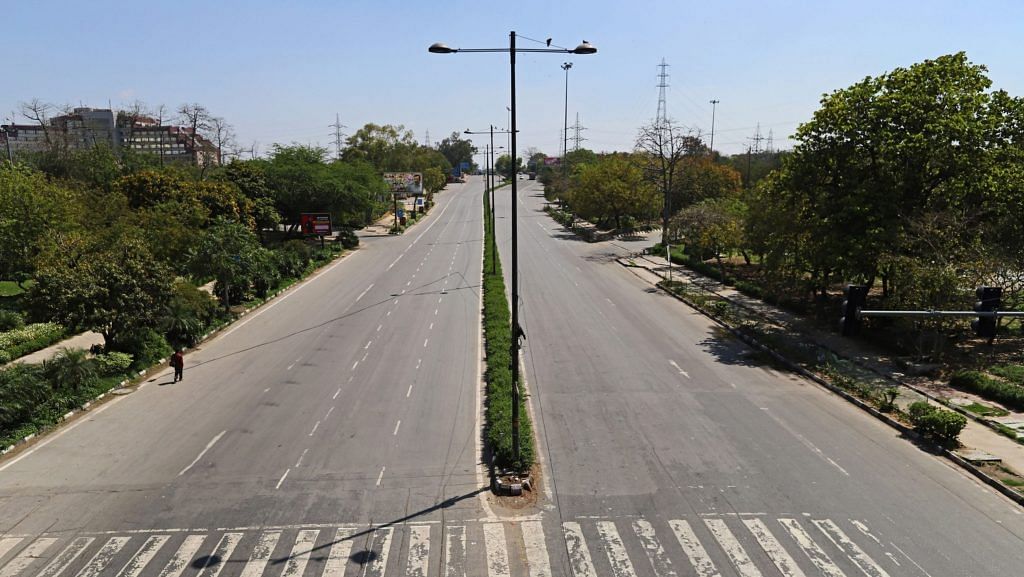New Delhi: The nationwide lockdown has been extended until 31 May, but this time a few more relaxations have been granted.
According to the new set of guidelines issued by the Ministry of Home Affairs Sunday, the government has allowed all activities except those “specifically prohibited”.
This would mean shops — including those selling non-essential items such as electronics, garments and others — will open, except in malls and containment areas. Services of beauty parlours and salons too can resume.
All restaurants and bars will remain closed for dining in, but can start home delivery of food.
Sports complexes have been allowed to reopen, but without any spectators. This means events like the Indian Premier League can be staged but with no people in attendance.
Public transport and goods
Intra-state movement of passenger vehicles and buses has also been allowed, at the discretion of the state governments.
The government has allowed inter-state movement of people in private vehicles and buses, but “with mutual consent of states involved”. This means each of the states and union territories will have to announce their consent to allowing such movement.
“For buses going to, say UP or Rajasthan, Delhi will have to announce that movement to these states via buses and private vehicles is now allowed. This will depend on these destination states agreeing to the same. Same norms will apply go for buses coming from these states to Delhi. Hence, resumption of vehicular movement across state borders shall depend on mutual consent of states,” a home ministry official explained to ThePrint.
The Centre has also asked all states and union territories to not stop any type of goods or cargo and even empty trucks, even for cross-land border trade under treaties with neighbouring countries.
They have also been asked to allow inter- and intra-state movement of medical professionals, nurses, paramedical staff, sanitation personnel and ambulances without restriction.
Also read: What govt wants in lockdown 4 — Aarogya Setu app in every family, cop in surveillance teams
What will remain shut?
All domestic and international air travel, except for domestic medical services, air ambulances and for security purposes, will remain prohibited.
Metro services too will remain suspended.
Schools, colleges and tuition centres will remain shut, and “online classes are encouraged at all educational institutions”, the MHA order stated.
Hotels and hospitality services, except those meant for housing government, police and health workers and stranded people, will remain shut.
All cinema halls, gyms, assembly halls and any kind of religious gathering too remain prohibited.
The night curfew that was imposed in the third phase of the lockdown (4-17 May) shall continue. “Movement of individuals shall remain prohibited between 7 pm to 7 am,” the order stated.
Red/orange/green zones
According to the order, the delineation of red, green, orange zones will now be decided by the governments of the states and union territories, after taking into consideration parameters shared by the Ministry of Health and Family Welfare.
Within red and orange zones, containment and buffer zones will be demarcated by the district authorities in accordance with health ministry guidelines.
In the containment zones, only essential services will be allowed, with strict perimeter control.
“Intensive contact tracing, house-to-house surveillance and medical help will be ensured in these containment areas,” an MHA official said.
Also, people above 65 years of age, those with comorbidities, pregnant women and children below the age of 10 have been advised to stay indoors.
Use of Aarogya Setu app
The MHA order stated that employees at all workplaces should be encouraged to download and use the Aarogya Setu app.
“The Aarogya Setu app enables early identification of potential risk of infection and acts as a shield for individuals and the community,” it said.
“To ensure safety in offices and workplaces, employers on a best effort basis should ensure that the app is downloaded by all employees.”
The government has also asked district authorities to advise individuals to install the app and constantly update their health status on it.
‘Incident commanders’ to ensure enforcement
The government has asked all states to strictly enforce guidelines and not dilute them.
To ensure this, district magistrates have been asked to deploy executive magistrates as ‘incident commanders’ in their respective local jurisdictions.
“The Incident Commander will be responsible for overall implementation of these measures,” the MHA order said.
“Any person violating will be liable to be booked under the Disaster Management Act and the Indian Penal Code,” it added.
Work from home encouraged, masks compulsory
The MHA order also stated that the practice of work from home should be encouraged and followed.
“Practice of work from home should be followed. Staggering of shifts should be maintained. Provision of thermal scanning, hand wash and sanitisers to be made at all entry/exit points of all workplaces. Regular sanitatisation also needs to be done,” the officer quoted above said.
Also, wearing a face mask at all public places and workplaces is mandatory, and spitting in public places will encourage a fine.
“Social distancing is to be strictly maintained at all workplaces. Marriage gatherings should not be more than 50 people. Not more than 20 people should gather at any funeral,” the officer added.
Also read: Can India risk a controlled epidemic after lockdown ends? It will depend on these factors
